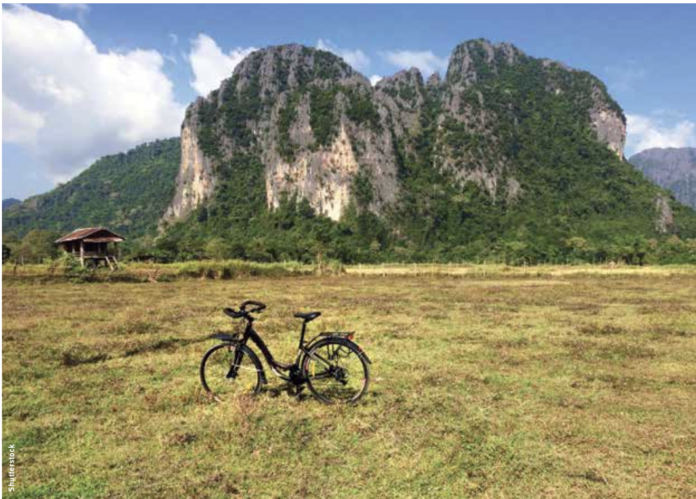The Trading Domes – Uzbekistan’s surviving Silk Road Bazaar
The complex of domes in sandy bricks is the living history to feel the atmosphere of the Silk Road ancient bazaar. Four out of five of the trading domes remain bustling with traders and buyers who bargain for unique stuff that is rarely found in any part of the world. Here is the market for second-hand antiques and new artisan...
A PEEK INTO AN OBSCURE NOOK OF ASIA – The Russian Rice Connection
According to an old legend of the Soyot people, a vicious person can never find the way into the valley of the Ok-hem River: Bad weather or misfortune will stop him. There are mountains all round the valley. This area of the Sayan Highland, situated to the west of Buryatia and sharing its borders with Tuva and Mongolia, is...
Saving the World’s Biggest Eagle
The national bird of the Philippines is under threat of extinction from deforestation and human persecution
Standing a metre tall, with a wingspan of well over two metres, the Philippine eagle – the iconic apex predator that serves as the archipelagic country’s national bird – is the largest eagle on the planet in terms of length and wing surface area....
INDONESIA – TROPICAL RAINFOREST HERITAGE OF SUMATRA
{Nanggroe Aceh Darussalam, Sumatra Utara (North Sumatra)}, Jambi, Sumatra Barat (West Sumatra), Sumatra Selatan (South Sumatra), Bengkulu, and Lampung}
The 2.5 million-hectare Tropical Rainforest Heritage of Sumatra site comprises three national parks: Gunung Leuser National Park, Kerinci Seblat National Park and Bukit Barisan Selatan National Park. The site holds the greatest potential for long-term conservation of the distinctive and diverse...
The Shark Conservationist Who Helped Capture Jaws
After participating in the shoot that led to Hollywood’s most famous shark scene, Valerie Taylor became a tireless defender of sharks and the marine environment. For ADEX Pixel Expo’s “Generational Exchange”, actress and ADEX Ambassador for Marine Conservation Hidy Yu talks to the Australian legend
Everybody, it seems, wants to be frightened of something. We don’t have witches and devils...
The Pink Orchid Mantis
With a pink and white body and large lobes on its feet resembling flower petals, Hymenopus coronatus is a beauty, but the life of this “flower mantis” is not all roses.
If you’re a male mantis, you’d better watch out! Your girl may be pretty, but she could be twice your size. Plus, she’s hungry, all the time. And there’s a good chance you are on...
LAOS – Cycle Luang Namtha’s Rice Paddies
The mountainous northern province of Luang Namtha offers emerald mountains and abundant rice paddies dotted with wooden huts. Bicycles, motorcycles and scooters are easily rentable, and provide a fast but flexible means of seeing the waterfal's, rivers and temples. The sparse traffic means peaceful, flat roads and the ability to stop and explore wherever piques your fancy.
One of the...
Pink Himalayan Salt
It’s probably no better for you than regular salt, and it doesn’t actually come from the Himalayas, but pink salt has some history behind it – and it’s here to stay
According to local legend, it was none other than the exalted historical figure Alexander the Great (356–323 BCE) who discovered pink salt, otherwise known as Himalayan salt, when he...









